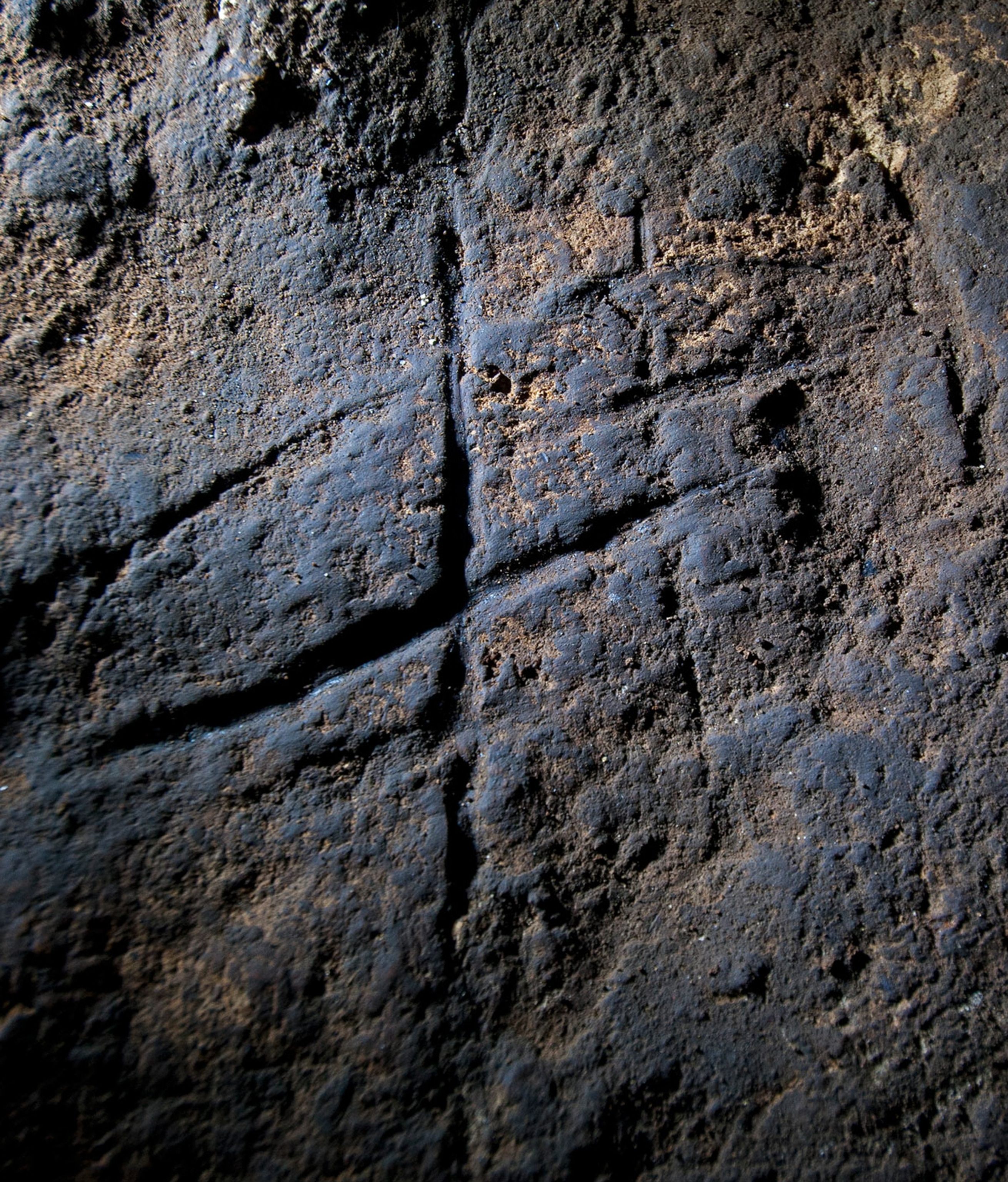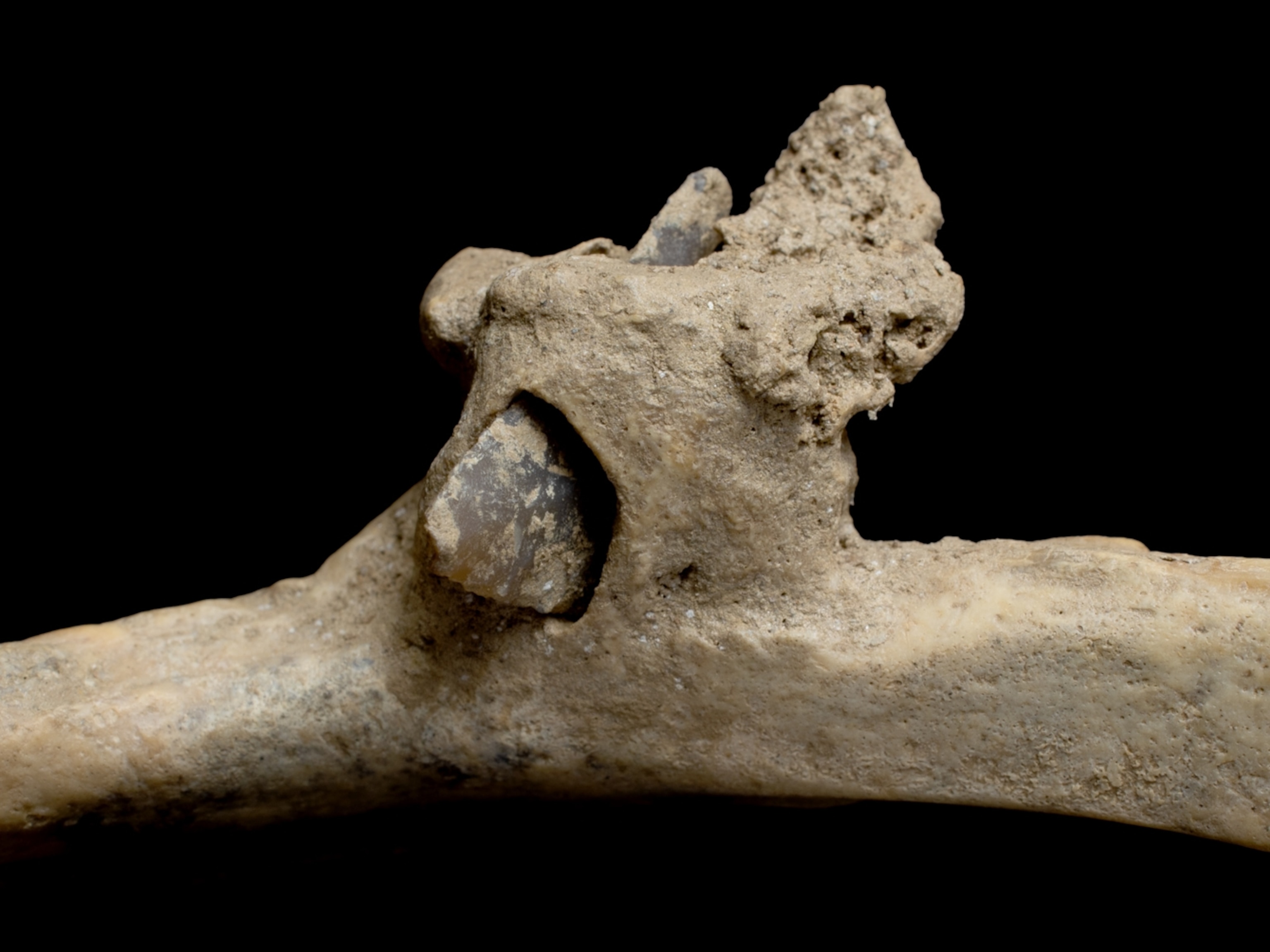
Newly Discovered Engraving May Revise Picture of Neanderthal Intelligence
Carved grooves hints at abstract thought among these extinct early humans.
An engraving carved into dolomite stone more than 39,000 years old in a seaside Gibraltar cave suggests that Neanderthals were capable of symbolic thinking—once thought unique to modern humans, researchers reported Monday.
Neanderthals, extinct human cousins who left genetic traces in modern people, seem to have vanished from Europe around 40,000 years ago. That was around the time early modern humans arrived. (See: "Neanderthals Died Out About 10,000 Years Earlier Than Thought, With Help From Modern Humans.")
Among the advantages that may have allowed those new arrivals to out-compete the Neanderthals were symbolic thought and language. But the cross-hatched cave carving, reported in Proceedings of the National Academy of Sciences, points to art and symbolic thought among Neanderthals as well. (Related: "Why Am I Neanderthal?")
"Originally, we could not quite believe what we had found and had to convince ourselves it was real," says Gibraltar Museum director Clive Finlayson, who headed the study team. "Is it art? Is it a doodle? I don't know, but it is clearly an abstract design."
When Neanderthals lived inside what is now Gorham's Cave, the site of the discovery, the region was rich with prey, mostly deer, but also predators such as hyenas. The researchers discovered the engraving in excavations on a small ledge nearly 330 feet (100 meters) into the cave.
"We can definitely say it is more than 39,000 years old, a time when there were no modern humans near Gibraltar," Finlayson says. A soil layer above the bedrock ledge contains Neanderthal tools, the team reports, and chemical analysis of the carving's patina points to its age.
"I think that this will stir up an extremely lively controversy, and people will no doubt argue," says paleoanthropologist Gilliane Monnier of the University of Minnesota, an expert on ancient stone tools. She thinks it's likely that the engraving is the work of Neanderthals, and agrees it dates to their era.
Monnier adds by email, "This is a very legitimate claim, on the authors' part."
Prodigal Cousins
Early modern people made cave art throughout Europe and traded shell beads as far back as 75,000 years ago in Africa. Neanderthals didn't leave much behind in the way of decoration, in contrast, although they did care for their infirm and bury their dead. (Related: "Surprise! 20 Percent of Neanderthal Genome Lives On in Modern Humans, Scientists Find.")
What evidence exists for Neanderthal symbolic thought is much disputed—hints of ochre pigments seen at burial sites, for example, may have been left over from tanning hides. And debate has simmered for decades over whether hand stencils and carvings from about 40,800 years ago in Spain's El Castillo cave were made by Neanderthals or early modern humans. No bones or tools remain at the site to help settle the dispute.
But now, underneath a layer of Neanderthal "rubbish" at Gorham's Cave, says Finlayson, the study team found the cross-hatched carving of lines roughly six inches (15 centimeters) long. "These are abstract, almost geometric shapes," he says.
Tests with copies of Neanderthal stone points show that the carving was made by stone points being dragged across the ledge's hard dolomite at least 54 times. Experiments also show that cutting skins against the dolomite would not have produced the pointed grooves of the engraving.

Mounting Evidence
The analysis was very detailed and suggests the cross-hatching could not have been made by animals, says carbon dating expert Tom Higham of the University of Oxford in the United Kingdom. "The markings are significant if made by Neanderthals and would add to the increasing amount of information implying that they were capable of thinking in more or less abstract ways."
The team suggests the ledge at the rear of the cave is where Neanderthals rested, protected behind fires at night from Europe's long-ago predators: lions, hyenas, and wolves. "It was a perfect place to rest and carve something," Finlayson says.
No evidence exists that modern humans were in this region of Europe more than 39,000 years ago, which leaves only Neanderthals to explain the engraving.
The study says this is the first abstract design found that could not have been made by modern humans, concluding, "It follows that the ability for abstract thought was not exclusive."
Follow Dan Vergano on Twitter.





